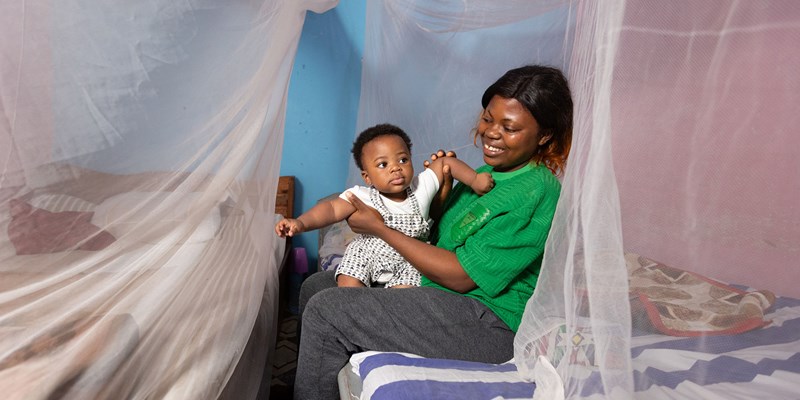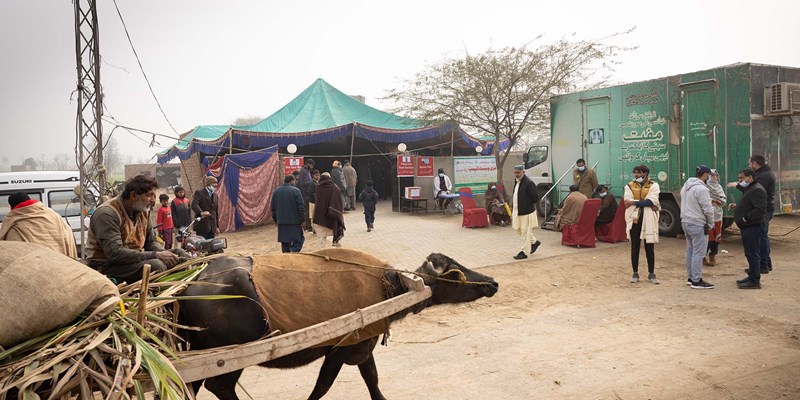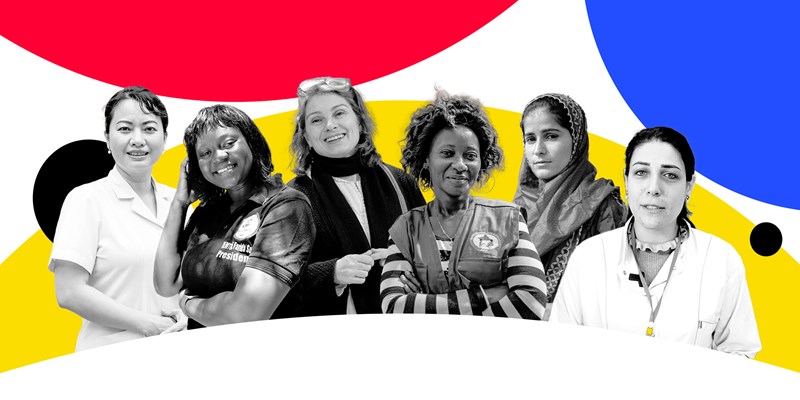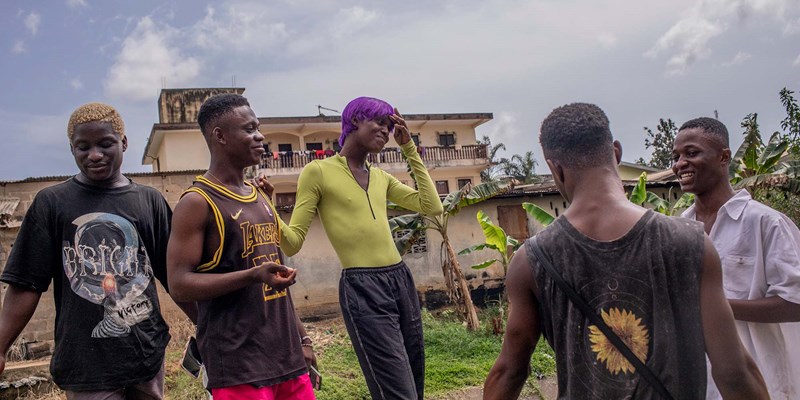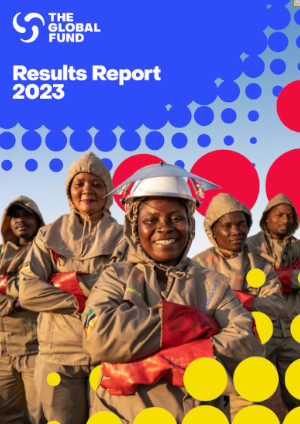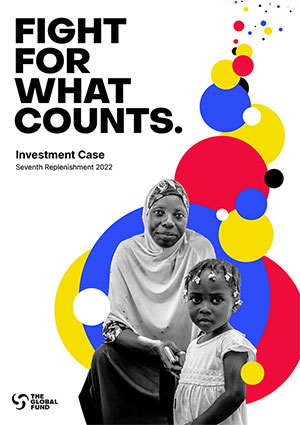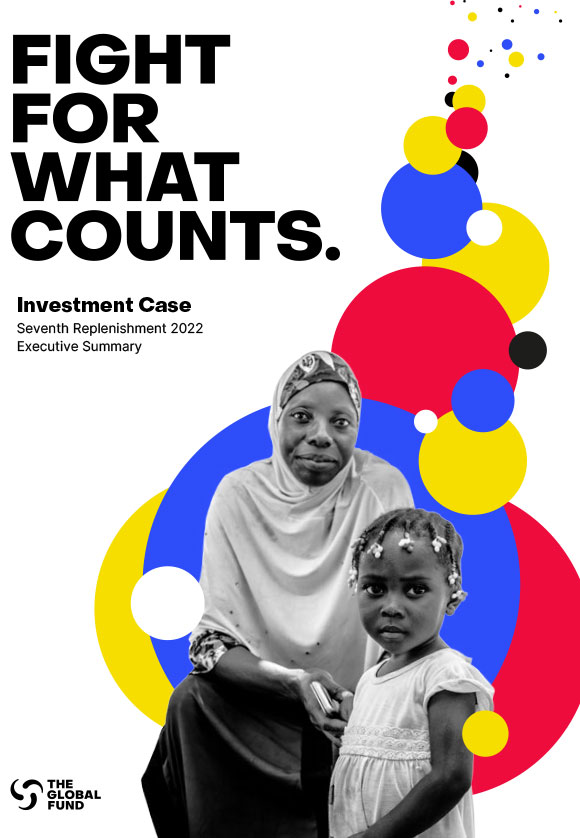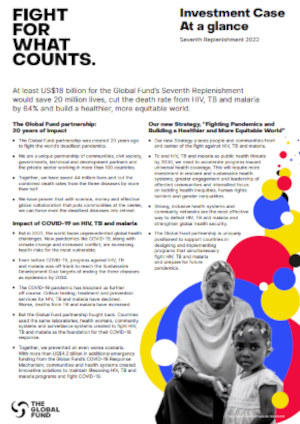New Global Fund Grant Results Show Substantial Impact
31 May 2006
More than 40% Increase in People Reached Over Six Months
New York - With nearly 400 grants approved to combat HIV/ AIDS, TB and malaria, Global Fund-financed programs are proving that where money is invested, treatment and prevention efforts are working.
Newly-compiled performance results show that as of end April, 544,000 people have begun antiretroviral (ARV) treatment through Global Fund-supported programs-- up from 384,000 six months ago. The new figures show a more than four-fold increase since December of 2004 in the number of people started on ARV treatment with support from the Global Fund.
Taken together, programs providing DOTS (Directly Observed Short Course Treatment) have detected and treated more than 1.4 million cases of tuberculosis worldwide. In addition, Global Fund-supported programs to combat malaria expanded distribution of insecticide-treated bed nets to 11.3 million, up from 7.7 million in December 2005.
Results at a Glance
| Intervention | Dec 2004 | Dec 2005 | June 2006 | Increase since Dec 2005 |
| HIV: People on ARV treatment | 130,000 | 384,000 | 544,000 | 42% |
| TB: Cases treated under DOTS | 385,000 | 1 million | 1.4 million | 43% |
| Malaria: Insecticide-treated nets distributed | 1.35 million | 7.7 million | 11.3 million | 47% |
"This latest set of performance figures comes as very good news, particularly this week, when the United Nations is meeting to discuss progress in the fight against AIDS over the past five years," said Richard Feachem, Executive Director of The Global Fund to Fight AIDS, Tuberculosis and Malaria. "These results demonstrate that where countries are given the resources they need, progress against this pandemic is possible. It shows that with sufficient global resources, we can drive back this scourge."
Global Fund support for efforts to combat AIDS account for 56 percent of the total US$ 5.4 billion committed to date for programs in 131 countries to fight the three diseases. Of the US$ 3 billion allocated to AIDS, half is dedicated to prevention activities while the other half is allocated to treatment.
In 2005, the Global Fund was responsible for an estimated 20 percent of all international funding in support of efforts to combat HIV/AIDS, and approximately two-thirds of global funding for programs against TB and malaria.
Over the past three years, Global Fund financing has enabled nearly 53 countries to change from malaria drugs which have become increasingly ineffective to the new artemisinin-based combination therapy (ACT), which has the potential to drastically reduce mortality from malaria among children and pregnant mothers. In some countries, Global Fund grants have also provided blanket coverage of new, long-lasting insecticide-treated bed nets, which afford more durable, effective protection against malaria to vulnerable populations. The roll-out of ACT or other effective combination therapies and bed nets - in combination with targeted insecticide spraying and strengthening of expertise, infrastructure and training - is expected to reduce malaria mortality in large parts of Africa in the coming years.
On average, data compiled shows that grants to combat all three diseases are exceeding targets set out in their respective grant agreements, which serve as the basis of the Global Fund's performance-based grant evaluation. The new results released today represent the aggregation of numbers issued directly from reports on progress by individual grants.
While the new treatment and prevention figures demonstrate the Global Fund's expanding track record in saving lives, raising awareness among vulnerable populations and preventing further infections, the Global Fund’s funding gap for years 2006 and 2007 threatens to curtail the momentum of funded programs as well as funding for new rounds of grants.
"New rounds of grants in 2006 and 2007 will provide the opportunity for countries to expand the considerable progress we are seeing against the three diseases", said Carol Jacobs, Chair of the Global Fund Board. "Donors need to make long-term commitments of sufficient resources to enable developing countries to plan for the future with confidence that funding for their lifesaving activities will not trail off."
Expected outcomes of grants approved in Rounds 1 - 5 after five years:
-
More than 1 .8 million people on antiretrovirals
-
62 million clients reached with voluntary counseling & testing services for HIV
-
Over 1 million orphans supported through medical services, education and community care
-
5 million additional tuberculosis cases treated under DOTS treatment strategy
-
264 million artemisinin-based combination treatments for drug-resistant malaria delivered
-
109 million bed nets financed to protect families from the transmission of malaria
The Global Fund is a unique global public-private partnership dedicated to attracting and disbursing additional resources to prevent and treat HIV/AIDS, tuberculosis and malaria. This partnership between governments, civil society, the private sector and affected communities represents a new approach to international health financing. The Global Fund works in close collaboration with other bilateral and multilateral organizations to supplement existing efforts dealing with the three diseases.
Apart from a high standard of technical quality, the Global Fund attaches no conditions to any of its grants. It is not an implementing agency, instead relying on local ownership and planning to ensure that new resources are directed to programs on the frontline of this global effort to reach those most in need. Its performance-based approach to grant-making is designed to ensure that funds are used efficiently and create real change for people and communities. All programs are monitored by independent organizations contracted by the Global Fund to ensure that its funding has an impact in the fight against these three pandemics.
